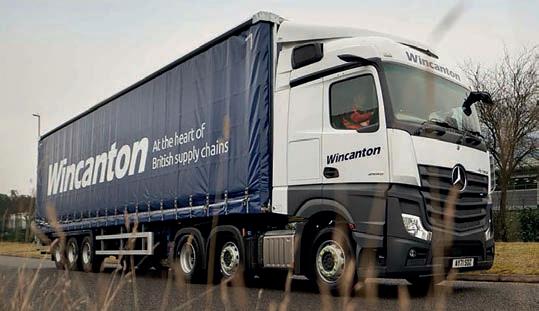
1 minute read
Wincanton adds to Halfords deal
By Carol Millett
Wincanton has won a new fiveyear contract with cycle and car accessories retailer Halfords to manage its entire transport operations for the UK and Ireland.
Advertisement
Under the contract, Wincanton will transport over 63.5 million items per year from the retailer’s three distribution centres to its network of nearly 400 stores across the UK and Ireland.
This contract builds on Wincanton’s existing eight-year partnership with Halfords, which has seen the group use its transport management technology to deliver £10m of continuous improvements to the efficiency and sustainability of Halfords’ transport operations.
Wincanton has also introduced a fleet of eight LNG vehicles to support Halfords’ net-zero ambitions, an initiative that has removed 628 tonnes of carbon emissions from Halfords’ transport operations.

Rachel Gilbey, Wincanton MD of general merchandise, said: “Halfords is a valued, long-standing customer and we are proud to be extending our partnership with them for a further five years.
“Today’s announcement is a testament to the great work that we do delivering operational improvements for our customers, and we look forward to continuing to use our innovation and technology to drive efficiency in Halfords’ transport operations in the years to come.”
Ian Ridley, Halfords head of logistics, added: “Following a comprehensive market review, we are pleased to announce that we are continuing our partnership with Wincanton with the award of a new five-year contract.
“Having held a very successful and long-standing partnership, we are delighted to be able to continue our efforts in delivering further service and cost improvements.”
Fleet operators are being urged to check yards for debris after a survey found a high level of punctures caused by on-site litter.
The two-year ‘Fleet Debris Study’ by tyre manufacturer Bridgestone looked at the source of debris-related punctures across five of its biggest fleet customers in England.
Using overhead satellite heat maps and daily checks, Bridgestone discovered 504 items of debris across the five sites, 200 of which were rated as medium to high risk hazards and potential sources of punctures.
The report follows an earlier study by Bridgestone in 2018, which found that 56% of the tyres analysed had failed due to road hazards, including punctures caused by sharp objects.
This latest study found that the highest amount of debris accumulated across the five fleets was in the vehicle washing areas, which the report said could be the result of parts becoming dislodged as vehicles are washed.
It also found that “considerable” debris was located in loading and unloading bays, which Bridgestone believes could be the result of drivers sweeping rubbish off their vehicles.
Gary Powell, Bridgestone technical manager for the north, headed up the Fleet Debris Study. He said: “Depots which employed a road sweeper were successful at significantly reducing the amount of debris, and specifically high-risk debris items like bolts and nails.”










